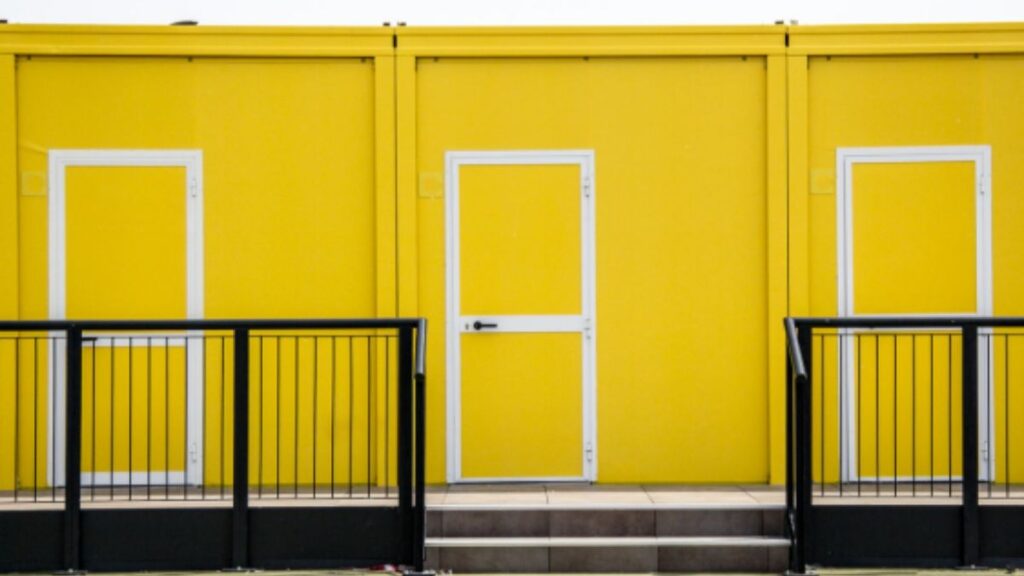Many homeowners underestimate the chaos that renovations can create, which results in unnecessary stress and damage to items. The right choice of storage will protect your belongings and enable seamless progress in the renovation.
A strategic approach to storage will help you manage space effectively so that essential items are easily accessible and non-essentials are out of the way. This guide will walk you through several key considerations to keep in mind while selecting storage during your renovation phase.
Assessing Your Storage Needs
Storing items during a renovation starts with understanding what you need to put away. Consider the size and quantity of your belongings, as well as their value. Electronics, artwork, or heirlooms require secure storage solutions to mitigate risks associated with theft or damage. Comprehensive planning means taking stock of everything—furniture, clothing, kitchenware, and decor—from large tables to fragile vases.
An effective approach is to categorize your items: essentials that you need access to, items you’ll require after the renovation, and things you can do without for a while. If you anticipate that your project could take several months, opt for a storage solution for easy access.
Evaluating the Location
Depending on the size of your renovation, you may need to choose between on-site storage — maybe a temporary storage container placed in your yard or off-site options like a storage facility nearby. If you are from the area, the specialists in Timaru storage provide facilities with a degree of comfort so you can check on your belongings whenever necessary without traveling far away. Factor in the safety and security of the location you choose. Make sure that the facility has adequate surveillance and climate control to protect sensitive items from fluctuating temperatures or humidity.
The safety of your belongings goes beyond just the structure: vet the reputation of the storage provider. Read customer reviews and request referrals to ensure you are selecting a reliable option that has demonstrated success in protecting customers’ belongings.
Different Storage Solutions
With a wide range of storage solutions available, understand which option suits your needs best. Self-storage units are popular as they allow you to maintain direct access to your belongings and be able to choose the size and climate control features. Moving pods or portable storage containers are also excellent solutions and provide the flexibility of keeping items on your property or moving them to a secure location.
Each option has its advantages depending on your requirements. If your renovation involves the kitchen, you may need to store appliances or dishes that you’ll require soon. However, if you’re redecorating a spare room, you can afford to store items longer without needing immediate access. Even calculate the costs involved with each option and keep in mind storage duration and any added features.
Planning for Accessibility and Security
Think about how often you might need to retrieve items from storage during the renovation. If regular access is necessary, go for a solution that provides extended hours or 24/7 accessibility. For off-site storage, verify the hours of operation and ensure they suit your schedule. They should also assist with loading and unloading services.
On the security front, inquire about surveillance systems, access codes, and whether they provide insurance options. Consider any additional features that may enhance security, such as climate control if you’re storing sensitive items.
Choosing the Right Size for Your Storage
An improperly sized unit may result in frustrations, either from cramming too many items in a smaller space or occasionally paying for storage you do not use. Measure your largest items accurately to gauge the space required. It’s also wise to allow extra room for maneuverability, particularly if you plan to access the unit frequently.
Choosing a slightly larger unit may be wise and provide flexibility should you decide to store additional items as the renovation unfolds. Look into vertical storage within the unit and utilize shelving to maximize space efficiently. Proper organization will ensure you can retrieve items without disrupting others and enhance your renovation experience.
Preparing Your Belongings for Storage
Prepare items for storage to avoid damage over time. First, clean and dry each item, as moisture or dirt can lead to mold or deterioration. For furniture, disassemble larger pieces, if possible, to save space and prevent breakage. Wrap fragile items with protective materials such as bubble wrap, packing paper, or blankets to cushion against bumps or impacts.
Labeling your boxes saves time when searching for specific items later on. For smaller or loose items, use plastic bins with clear lids to enhance visibility. Clear separation of your stored items into categories (decor, appliances, and personal items) will streamline organization and retrieval during or after the renovation. Avoid storing valuable items in regular cardboard boxes as they may not provide the protection needed. Instead, seek high-quality, durable containers designed for long-term storage.

When handling storage needs during renovations, reflecting on the considerations outlined above allows for thoughtful decision-making. Know how to safeguard your belongings and enhance the renovation experience to transform a challenging project into a manageable endeavor.







